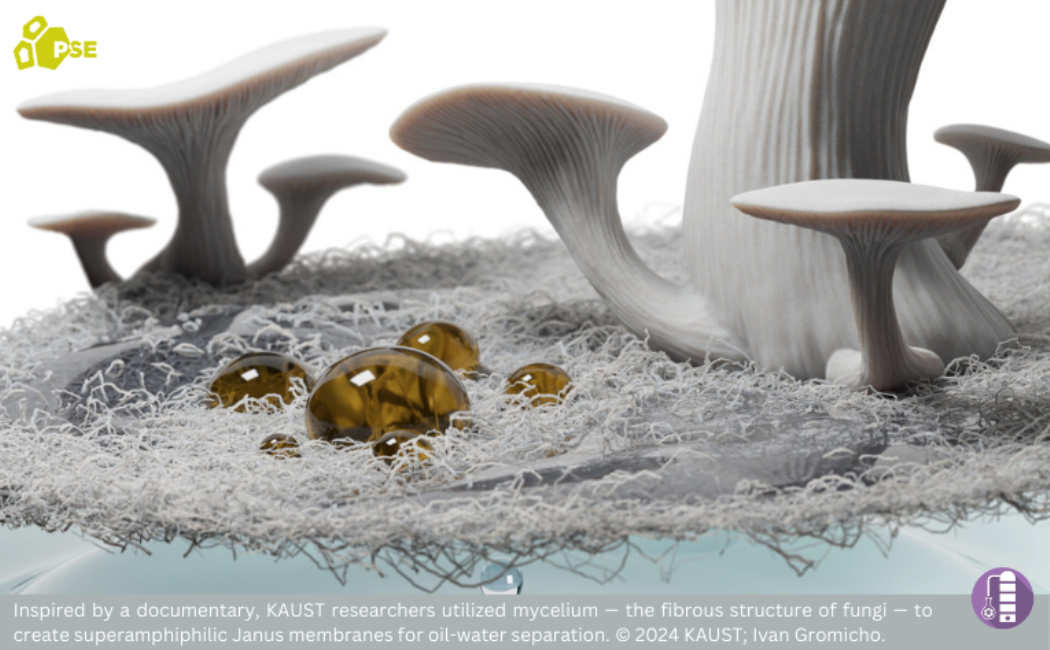

LATEST
NEWS

30 January, 2024
A bio-inspired approach that produces membranes for oil–water separation could enable more sustainable and ecofriendly ways to clean up crude oil spills
Janus membranes, which exhibit different properties on their opposite sides, are useful for oil–water separations. One side can display superhydrophilicity — an extremely high affinity for water and polar liquids — while the other side can be superhydrophobic, with an extremely high affinity for nonpolar liquids, such as oil and hydrocarbons.
This “superamphiphilicity” can be tailored to meet specific needs by fine-tuning the wetting properties of each membrane surface. However, most membranes are formed of petroleum-derived materials, which leave a large carbon footprint and are difficult to develop.
Recently graduated Ph.D. student Joyce Cavalcante and her supervisor, chemical engineer Gyorgy Szekely, have devised a method that exploits the root-like fibrous structure of fungi known as mycelium to generate superamphiphilic Janus membranes to separate oil from water.
Cavalcante explains that the method harnesses the self-growing nature of fungi-based materials, providing a dynamic and ecofriendly alternative to traditional membrane development.
Szekely says the approach was sparked by the documentary “Fantastic Fungi,” which reveals how fungi wield incredible powers as natural recyclers and symbiotic architects — roles that are often overlooked. Mycelium can be moulded into various shapes for multiple applications ranging from furniture and construction materials to substitutes for leather. These materials use up waste and are compostable, which minimizes their environmental footprint.
Read more at KAUST Discovery.